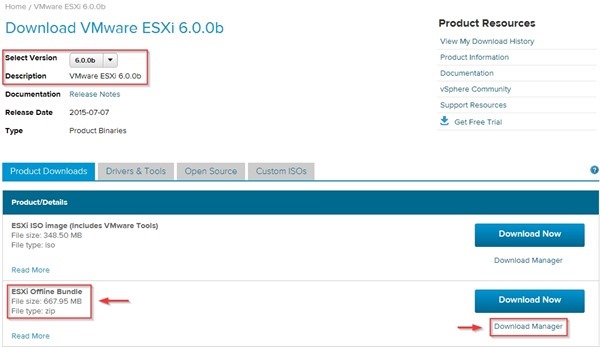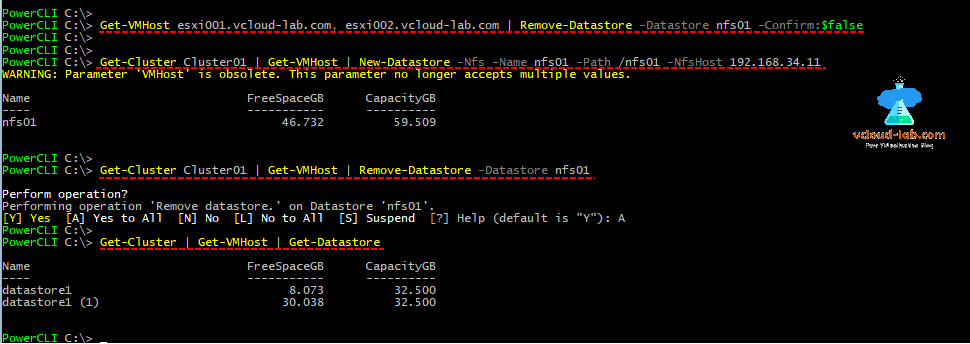

- How to add a network datastore to vmware esxi 6 cli how to#
- How to add a network datastore to vmware esxi 6 cli install#
- How to add a network datastore to vmware esxi 6 cli iso#
- How to add a network datastore to vmware esxi 6 cli windows 7#
In our next article, let us review how to use/attach an existing datastore to a virtual machine. The new datastore3 is created as shown below. The final confirmation section confirms our selection as shown below.įig: VMware Datastore creation confirmation 8. The following procedure will help mount a VMFS datastore to the ESXi host: Log in to the vCenter Server using the vSphere web client and use the key combination Ctrl + Alt + 2 to switch to the Host and Clusters view. Note: A New vSwitch for NFS Network Traffic may need to be created in advance of the following steps.

Add the NFS Share as a VMware Datastore using the vSphere client. Leave the capacity check-box as maximum capacity.įig: VMware Datastore Disk Formatting 7. When the NFS Share has been successfully created, select Close. Following options are available for the maximum file size: In this example, I selected 256GB as maximum file size with 1MB block size. Specify the maximum file size for this esx datastore. Specify the VMFS datastore name in the properties screen.įig: VMFS datastore Name 6. Click on Next to continueįig: VMware VMFS Disk Layout Configuration 5.
How to add a network datastore to vmware esxi 6 cli windows 7#
After adding the Windows 7 image file to the ESXi machine, click on the Save button. In the Datastore Browser window, select the image file you have added and click the Select button.

How to add a network datastore to vmware esxi 6 cli iso#
This is only a information screen that says that the hard disk is blank etc. To add the image file to the Windows 7 VM on vSphere, select Datastore ISO File from CD/DVD Drive 1. If you have more than one diskgroup available to the hardware, they’ll be listed here.įig: vSphere VMware Select disk 4. The raid-1 diskgroup that was created at the hardware level is now visible to the ESXi server. This is a dell poweredge 2950 server, which already has a raid-1 logical disk group created at the hardware raid level. This step will display all the available disk groups on the server. (other option is to select network file system – nfs datastore)įig: Select ESXi Storage Type – Disk/LUN 3. The first step is to specicy the esx storage type for the new ESX VMFS datastore. Create VMFS Datastore – Select ESX Storage TypeĬlick on ‘Add Storage.’ link on the top right hand corner, which will display the “Add Storage” wizard. Please note that the VMS file system can be created across multiple partitions to form one logical VMFS volume. This storage section, will display all available VMware datastores as shown below.įor example, the current VMware datastore1 on this ESXi server has following information. Launch vSphere Client -> Click on the top node in the left tree -> Configuration tab -> Click on the storage menu item under “Hardware” section, as shown below. In this article, let us see how to create a new datastore using vSphere client. The following block contains all that is necessary to create a new virtual machine, with a single disk and network interface.
How to add a network datastore to vmware esxi 6 cli install#
l | –list List the currently mounted NAS file systems.As part of our on-going VMware series of articles, we earlier discussed about how to install VMware ESXi server, and how to install vSphere Client. d|–delete Unmount and delete a filesystem. y|–readonly Add the new NAS filesystem with readonly access. s|–share Set the name of the NAS share on the remote system. o|–host Set the host name or ip address for a NAS mount. Use –readonly option only for readonly access. a|–add Add a new NAS filesystem to /vmfs volumes.

Ive tried https, and got the same message you are getting. Volume Name Host Share Accessible Mounted Read-Only isPE Hardware Acceleration How do you find the nas_server_hostname or ipaddress and the sharename ? NOTE : : Just give the name and it will be created automaticallyĮsxcfg-nas -a -o -s /opt/bugs bugs NAS is cost effective solution rather than FC/iSCSI storage. Select HPE Storage Type > Adding HPE 3PAR StoreServ and HPE Primera > Step 1. So just mount your NFS shares and start using all the features of ESXi which are supported in shared storage environment. As previously mentioned, the MOB is disabled by default in vSphere 6. Almost all the VMFS supported features are supported for even NAS/NFS. You can use this mounts/shares to store VMs and other files. ESXi/vSphere supports NFS3 and NFS4.1 also.


 0 kommentar(er)
0 kommentar(er)
